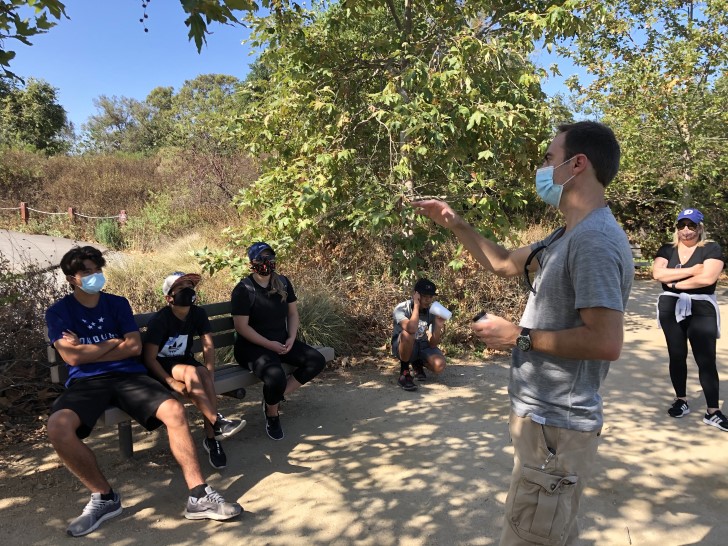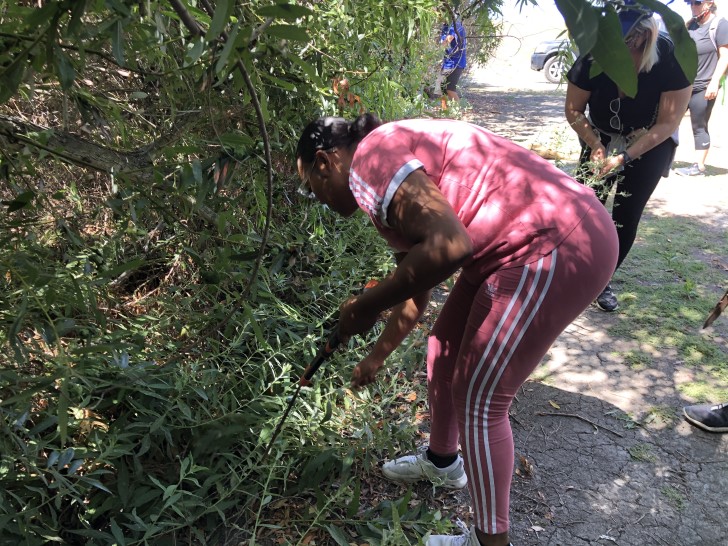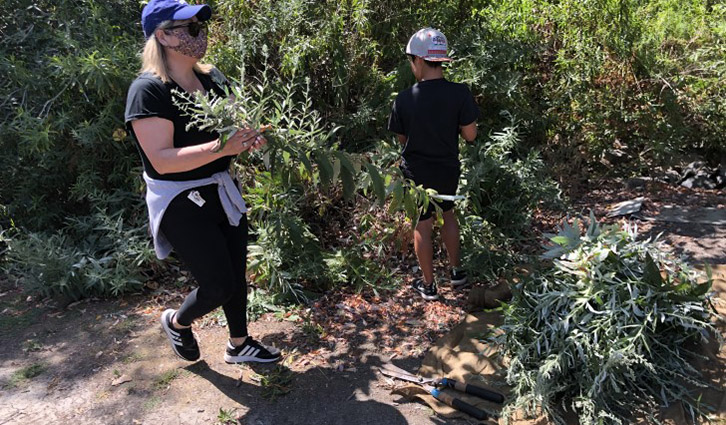-
Published: Dec 15, 2020 | 11:49 AM
Local Tribe Collects Marsh Plants for Traditional Uses
Many of the native plants that rim the shoreline of the ponds at the San Joaquin Marsh do more than clean the water and provide habitat for the creatures that live there.
To members of the Gabrieleño Band of Mission Indians – Kizh Nation, these plants represent gifts from Mother Earth with medicinal properties that can be healing and therapeutic.
At various times of the year, when Irvine Ranch Water District trims back the marsh foliage to control overgrowth, tribal members will come in to collect the clippings for use in preparing their traditional remedies.
“These plants provide medicinal compounds our tribe has traditionally used for centuries and we still use today,” said Tribal Biologist Matthew Teutimez.
Coyote bush (Baccharis pilularis) can be used to treat poison oak, the entire Asteraceae (sunflower) family of plants contain anti-inflammatory elements, and mugwort (Artemisia douglasiana) — a member of that family — is used by our tribe in steam treatments to help with respiratory ailments and cleansing of the lungs, he said.
“Throughout time, our native plants have had to create their own defenses to protect against molds, fungi, bacteria, viruses and other microbial threats,” Teutimez said. “These river plants are very good uptakers of nutrients, using a natural process that results in a diversity of compounds that made them very good for medicine.”
Marsh fleabane (Pluchea odorata), with its purple flowers, is a good example with this capacity, he added. “That’s why it also can be used as a great uptaker of toxins from urban runoff, which makes it particularly effective in removing contaminants from waters and soils.”
Tribe members don’t harvest or forage for native plants on their own. They don’t want to remove or disturb the native flora in the wild. But they do collect the trimmings when organizations are conducting routine trimming of native overgrowth from the sides of roads and trails.
Teutimez involves tribal youth in the collection process, under a tribal program he termed “Mother’s Medicine” — with the tagline of creating traditional therapy for tribal elders by tribal youth.
The tribe collects clippings at the marsh and other locations at various times of the year — preferring periods after heavy rains to collect new green growth. They were recently in Anaheim Hills, collecting cuttings of coastal sage trimmed from the trails.
IRWD Natural Resources Manager Ian Swift said the tribe’s collection of clippings from marsh maintenance makes good use of material that otherwise would be composted.
“It takes things full-circle, in terms of blending the past with the present, and it has no impact on the integrity of the marsh and wildlife sanctuary,” Swift said.
The Gabrieleño tribe is indigenous to the Los Angeles basin, and one of its permanent villages containing many homesites was located next to the marsh, where UC Irvine now stands.
They were a very influential tribe, according to Teutimez, due to their access to the ocean and to an abundance of natural resources such as oil (asphaltum), which could be used to waterproof ocean-faring boats and create waterproof bottles made of grasses. Gabrieleño ancestors sustained a vibrant culture here in Southern California for thousands of years because of the native plants and animals that were gifted to this land for the subsistence of its people.

IRWD Natural Resources Manager Ian Swift provides instructions prior to the collection.






